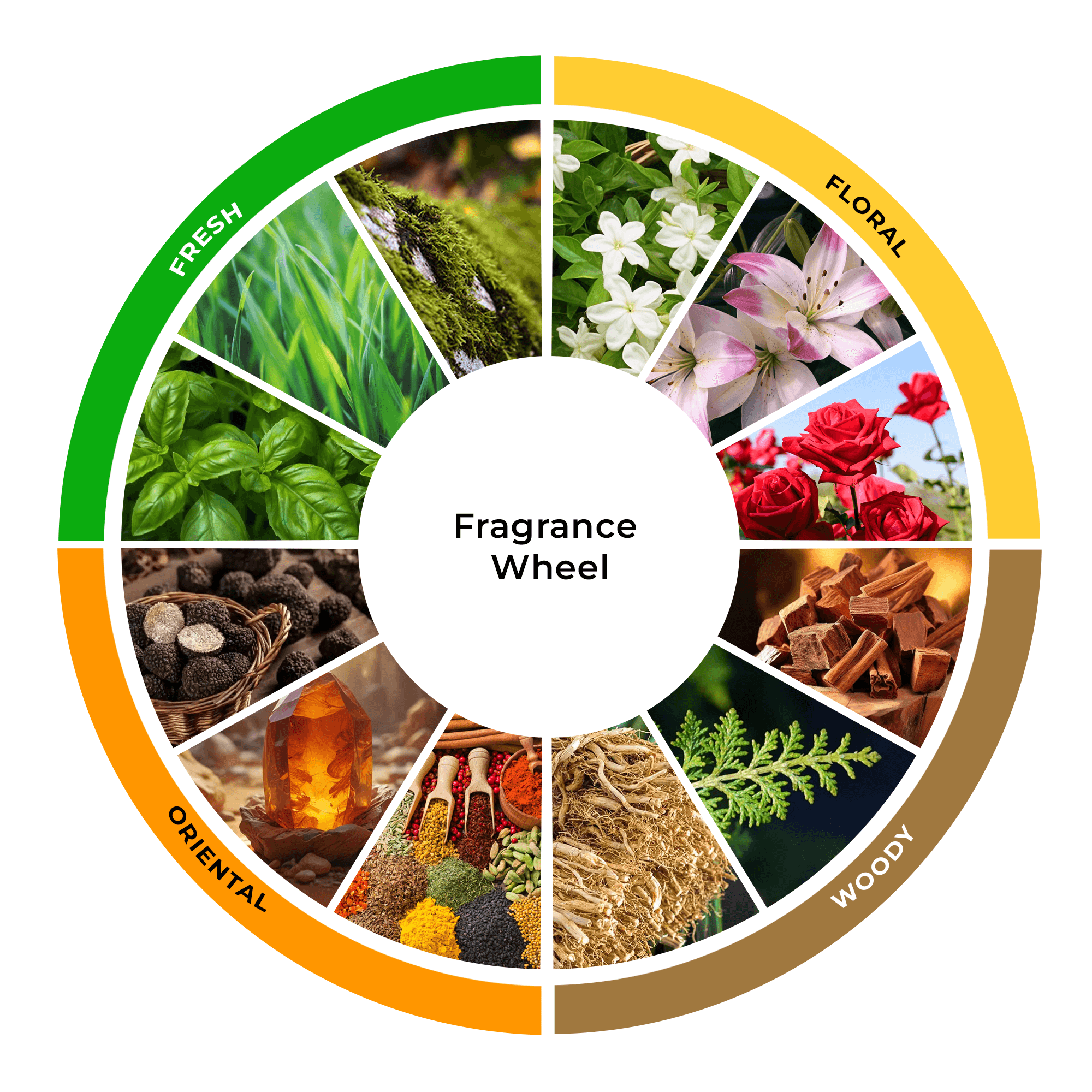Whether you’re just starting your perfume journey or want to refine your knowledge about scents, understanding fragrance notes is essential. Fragrance is the intricate art that weaves aromas to create a unique olfactory experience.
With this guide, let us dive into the basics of fragrance notes, the structure of perfumes, and tips on how to identify and appreciate different scents.
What are Fragrance Notes?
Fragrance notes are the distinct layers of aroma that form a perfume’s overall scent profile. Just like a symphony, where different instruments harmonise, fragrance notes come together to craft a delightful multisensory experience.
They are categorised into three main types: top notes, middle (or heart) notes, and base notes. Each of these notes unfolds at different stages after applying the fragrance, thus adding to the complexity of the scent.
1. Top Notes
Top notes are the initial scents that you end up smelling immediately after application. Typically light, fresh and fleeting, they last about 5 to 30 minutes. Common top notes include:

These notes are the personification of what immediate impressions are made of and set the stage for the fragrance that follows.
2. Middle Notes
As the top notes fade, the heart or middle notes emerge, usually lasting several hours. These notes are more rounded and complex, and often combine floral, spicy, and fruity accords. Some examples are:

These shape the character of the scent and play a great influence on how the fragrance is perceived over time.
3. Base Notes
Base notes provide depth and richness to the fragrance, becoming apparent after the top and middle notes have faded away and can last for several hours or even days. Common base notes include:

These heavier, earthier scents anchor the perfume’s overall composition and can be the most memorable aspects of the scent.
The Fragrance Wheel: Categories to Explore
To better understand fragrance notes, consider exploring the fragrance wheel, which organises scents into different families:

- Floral: Characterised by blooming flowers, this family is often romantic and feminine (e.g., lily, rose, jasmine).
- Woody: Earthy and warm, woody notes often evoke a sense of grounding (e.g., sandalwood, cedar, vetiver).
- Oriental: Exotic and sensual, this family includes warm and spicy elements (e.g., musk, vanilla, amber).
- Fresh: Light and clean, fresh fragrances include aquatic and green notes (e.g., basil, sea breeze, grass).
Tips for Choosing and Enjoying Fragrances
Try Before You Buy: As body chemistry can alter how a scent smells on you, consider trying out a fragrance from the Pocket Perfume range!
Layer Your Scents: Experiment by mixing different scent families, such as a floral perfume with a woody base, to create a unique signature scent.
Consider the Occasion: Lighter scents are ideal for daytime, while richer fragrances are perfect for evenings or special events. Our Pocket Perfumes are designed for your convenience, allowing you to effortlessly apply touch-ups anytime and anywhere!
Store Properly: Keep fragrances in a cool, dark place to maintain their integrity and composition.
In conclusion, understanding fragrance notes is the key to unlocking the enchanting world of perfumes. We encourage you to explore, experiment, and fully immerse yourself in the aromatic experience that Pocket Perfume has to offer. Don’t miss out on the opportunity to embark on this unique journey!

